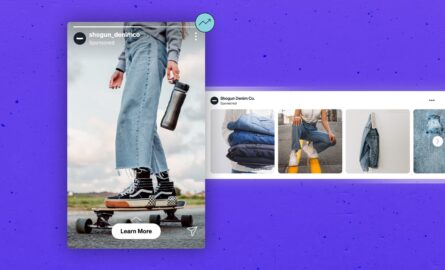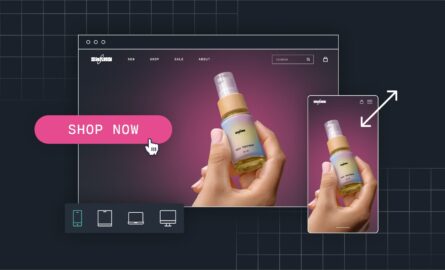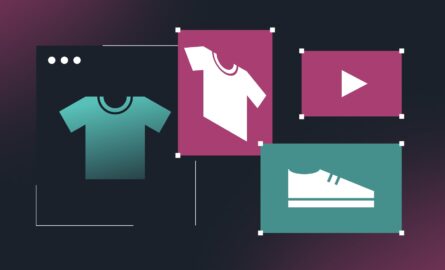10 Proven Ecommerce Customer Experience Tactics That Convert (With Examples!)
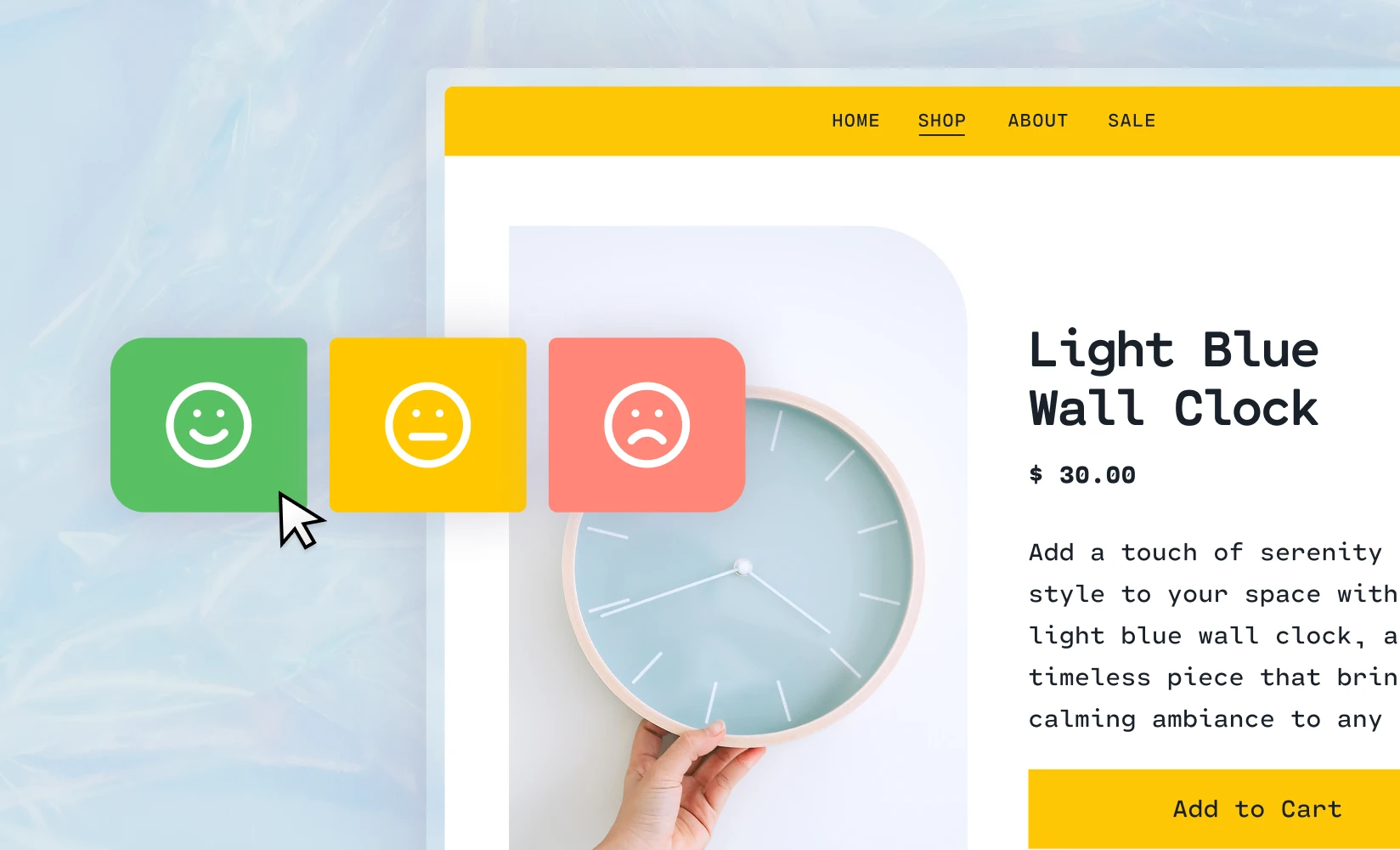
You know a top-notch ecommerce customer experience (ECX) is critical to convert shoppers. And considering global online retail sales are projected to hit $6.3 billion in 2023, with 2.64 billion people—one-third of the world’s population(!)—shopping online, it’s never been more important to prioritize the best, most friction-free shopping possible.
But just because more people shop online now doesn’t mean all ecommerce stores are thriving. In fact, on the opportunity for improvement, the average ecommerce bounce rate is around 50% across desktop and mobile. It’s clear shoppers aren’t sticking around for any old storefront.
As shoppers, we’re all spoiled for choice and brands need to constantly raise the bar.
Whether browsing your site content, making a purchase, or seeking customer support, there’s always room to improve shoppers’ experience. By making each interaction with your brand more enjoyable, you encourage repeat customers and the brand love that catapults brands to new heights.
Below we’ll cover why a good online shopping experience matters and share 10 practical tactics for improving yours. Plus we’ll share real examples of the tips in action. Skip ahead with the jump links:
What we’ll cover:
#cta-visual-pb#<cta-title>Customize your store, fast<cta-title>Optimize your product detail pages, blog layouts, and more with Shogun’s generative AI and optimization features. Get started today
What is an ecommerce customer experience, and why does it matter?
Top of mind for every ecommerce manager, ecommerce customer experience (ECX) is a term referring to all the interactions from when shoppers first discover your brand, through to their post-purchase activities.
An especially effective customer experience encourages people to buy from you—then go tell their friends about it.
So, it’s not just about one sale—it’s about delighting customers so they return, help spread word of mouth, and grow your business and brand equity. This is achieved through all the micro-interactions you build into your ecommerce site (UX), but also via the store policies you set up, how personlized your content has been purposely designed to feel, and even the quality of the imagery you serve up subtly throughout the journey.
To discover it’s importance and potential as a game changer, let’s look at how this shows up with a real ecommerce brand…
ECX in action: a case study on Lyre’s
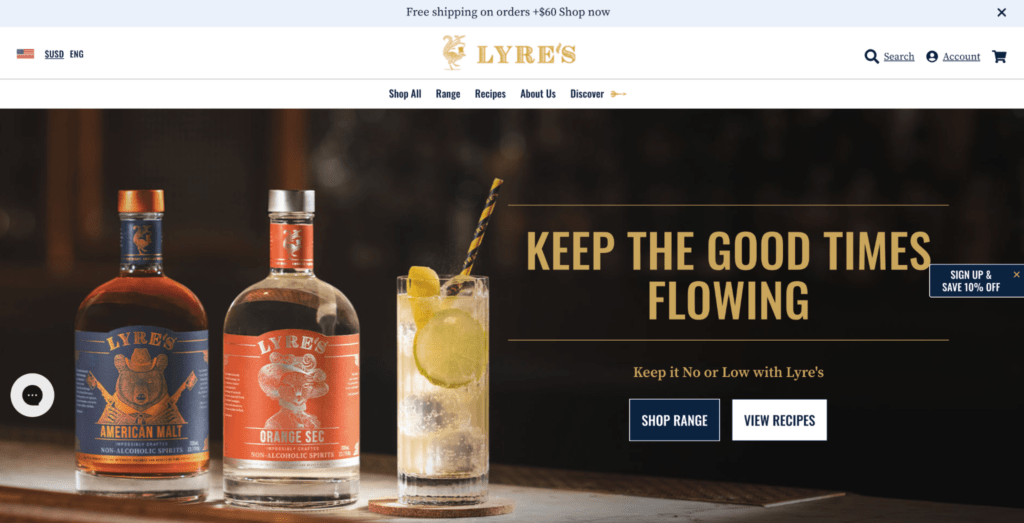
Lyre’s, a beverage brand and leader in non-alcoholic spirits, understood that a truly excellent experience can turn visitors into loyal customers. With Shogun—paired with their BigCommerce platform—they crafted an elegant, luxurious ecommerce site facilitating effortless purchases.
With a focus on the customer, Lyre’s had goals to add especially dynamic content to their store, and wanted shoppers to encounter elevated, persuasive visuals page-to-page.
- Today, with their web team fully enabled to be agile (they can go way beyond Stencil or cookie-cutter templates), they’ve published hundreds of pages rapidly (they use Content Syncing to quickly clone content for each regional site), plus
- They’ve been able to incorporate short videos and a store locator in especially interactive or unique ways, keeping buyers engaged on-site vs. sending them elsewhere and interrupting the buyer journey.
- Beyond their site, their welcome email series and other aspects of the brand are flawlessly executed. This is a brand that understands the value of every touchpoint.
By making the customer experience especially engaging and straightforward with customized and dynamic content (elevating their brand’s online presence), Lyer’s ultimately saw a 15% surge in sales on US-based landing pages. This shows just how important UX improvements, and ecommerce customer experience is (and underscores the importance of a brand becoming nimble to achieve it!).
#cta-paragraph-pb# Note: User experience (UX) is a subset of ECX. Good UX ensures your website operates smoothly, users can effortlessly find what they’re looking for, and their journey on your website is hassle-free. While UX focuses on the on-site experience, Ecommerce customer experience encompasses the broader spectrum of the entire customer journey and beyond. ECX, for example, could speak to your store policies or various trends you’re deploying on your site like augmented reality, or even your payment gateways and how they contribute to ease for shoppers.
The 10 best tactics for radically improving your ecommerce customer experience
Now that we’ve briefly covered why a focus on your ecommerce customer experience can have such an impact to your brand’s perception and the bottom line, let’s explore 10 powerful tactics you can try today to impress shoppers and boost sales.
Each tactic is demonstrated with a real-life brand example for inspiration to take back to your own store.
1. Design an intuitive user interface
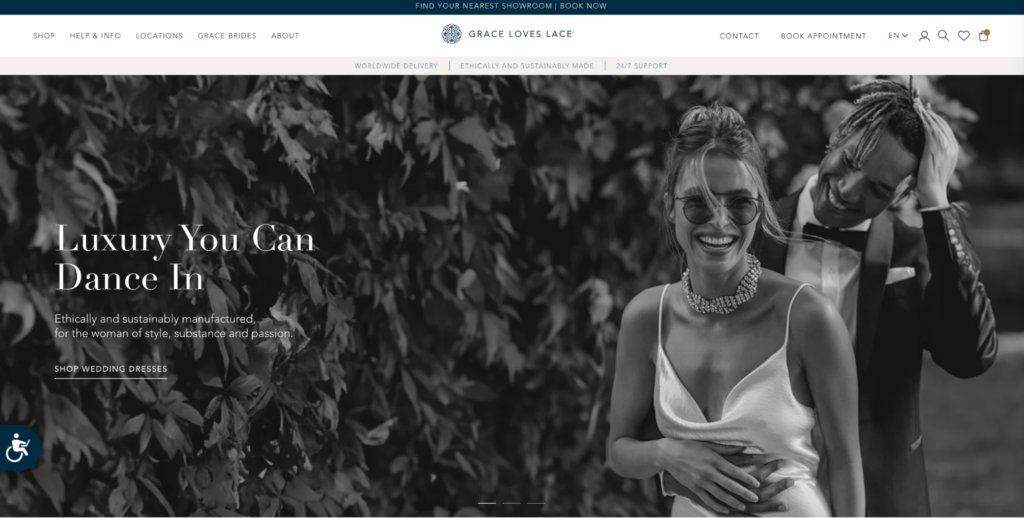
Visitors have chosen your website over countless others in a given moment (your advertising has worked!). Your aim now is to make buying from you as friction-free as possible.
Complex navigation, overwhelming layouts, and time-consuming or confusing checkout processes can discourage shoppers in an instant (we all know the experience of being the shopper and the dealbreakers encountered along the way). It’s way too easy to be turned off by a poor user experience, and bounce without making a purchase.
If your site doesn’t immediately feel intuitive, your competitors seize the advantage.
What you can do
It’s been found you can raise your website’s conversion rate by up to as much as 200% by creating a user-friendly interface. Consider the following steps:
- Ensure smooth navigation, making it easy for users to discover products more easily on your site.
- Logically structure product categories for easy browsing.
- Insert clear call-to-actions (CTAs) at critical moments, prompting shoppers toward desired actions.
- Make checkout frictionless.
- Provide convenient payment choices once at checkout.
- Related to the UX, make the returns process streamlined and hassle-free. Consider where it can be initiated from various touch points for convenience: web, email, etc.)
By focusing on the micro interactions in the areas above, you can make a considerable difference, and even percentage-point increases to your conversion rates have compounding effects:
“We’ve increased our customer retention by 30% since we redesigned our website to be more user-friendly, allowing our clients to find and purchase the ideal lighting solutions easily. Furthermore, providing custom product recommendations based on previous purchases has increased our average order value by 20%.”— Matt Little, Director and Owner, Festoon House
Ultimately, ensure there is ownership on your ecommerce web team for optimizing these factors your website to boost your sales significantly.
Customer experience improvements in action: Grace Loves Lace
With the capability to add UX elements to their store that aren’t available in native Shopify, Shogun enabled international bridal brand Grace Loves Lace to create more intuitive UX across their storefront—and deliver and manage international content at scale, rapidly. The brand needed a way to clone and efficiently manage content across multiple country-specific sites, make updates quickly, and richer content without relying on developers all while enhancing the user experience.
The Global Snippets feature in particular allowed for quick content updates and reuse of popular content blocks across multiple stores with just a few clicks.
With a focus on their site’s UX in combo with ecommerce customer experience overall, Grace Loves Lace saw a reduction of 30 hours of work per week cloning new pages (instead of manually re-building them) and vastly accelerated their time to market with excellent experiences for customers via the page elements they could use (beyond what’s natively available in classic ecommerce platforms).
2. Enhance page loading speed
Regularly leave websites when they load too slowly? Yeah, us too. Slow-loading pages frustrate visitors, leading to high bounce rates and reduced engagement.
What you can do
It’s been shown that conversion rates can be up to five times higher if your ecommerce store loads in one second compared to three seconds. Every millisecond counts!
To ensure speed optimization for Shopify and BigCommerce stores, implement the following techniques:
- Optimize images throughout your storefront
- Allow browser caching to store website data on users’ devices.
- Use a reputable content delivery network or CDN to deliver your website content faster.
- Minimize HTTP requests to reduce external file fetches.
#cta-paragraph-pb# For even more advanced optimizations to try, check out all the recommendations we’ve curated for implementing speed fixes for Shopify here.
Ecommerce customer experience in action: Tonic Studios
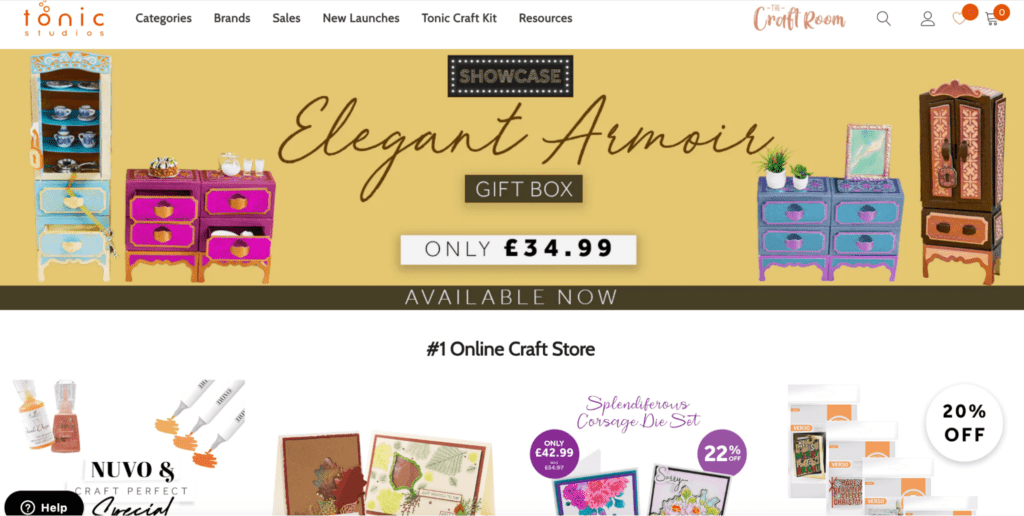
As an example of improving conversions via optimized page speeds or load time, Tonic Studios, a leading UK-based online craft store built with Shogun, has over 649 blog pages, yet you’ll notice each article and page still loads fast. The brand can accommodate strong imagery, and make the store look exciting without sacrificing load time.
This is largely because Shogun is engineered for speed, from the codebase, to the software’s UX, using JSON component initialization, asynchronous image decoding, and more. Tonic and our other 35,000+ customer brands benefit from our performant integration with Shopify, automatic lazy loading, responsive design, and optimized images.
Moreover, using Shogun Insights, our built-in optimization tool, you can get in-builder recommendations to improve Google web vitals like Cumulative Layout Shift (CLS), Largest Contentful Paint (LCP), and First Contentful Paint (FCP). This ensures a smoother, faster user experience, leading to more conversions.
3. Craft visually stunning, informative product pages
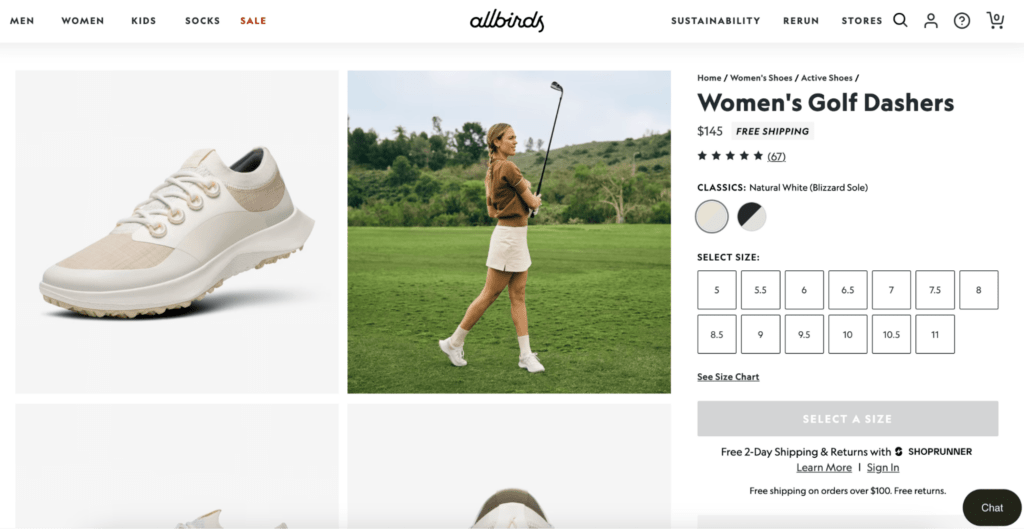
You can’t personally speak to each online shopper about how good your product is. But the next best thing is to persuade them via powerful words, visual demonstrations of your product in the context of use, and all the details they could possibly want (to stop them searching elsewhere!)
Building visually stunning and deeply informative product detail pages (and putting your best layouts on repeat, for consistency) is key for this.
Building trust is your burden as the retailer/merchant, and proving your product is the top choice requires clear sizing charts, easily discoverable store policies, reputable reviews at-a-glance, chat buttons in all the right places (with real humans behind them!)—and product pages are your best place to serve all of this up. They’re an art and science.
According to Baymard Institute, 10% of ecommerce stores need more product descriptions. The same report says that 87% of customers won’t make a repeat purchase from an ecommerce store that doesn’t have accurate product descriptions.
What you can do
To make a lasting impression on buyers through your product description, consider the following:
- Write in-depth descriptions covering materials, unique features, and size guides.
- Employ strong words and powerful storytelling throughout product detail pages and the descriptions.
- Accompany product descriptions with high-resolution product images. Ideally these are zoomable, interactive, and you can consider including product demonstration videos.
- Include clear CTA buttons that ‘stick’ as users scroll through product pages for easy purchasing.
- Provide transparent shipping details, costs, delivery times, and return policies directly on PDPs.
- Showcase user reviews and social media content prominently as powerful social proof.
- Use SEO keywords effectively in product titles and descriptions to make your pages more visible.
“With so many options for customers, it’s imperative you make the purchasing process simple, easy, and straightforward. If what they’re looking for isn’t right in front of their eyes and readily available, you might see high levels of cart abandonment. Furthermore, taking the extra step with things like suggested items or recently viewed items will further help to streamline the customer experience and make your ecommerce website more desirable from start to finish.”
~Erin Banta, Co-Founder, Pepper Home
Ecommerce customer experience in action: AllBirds
Look at how AllBirds, the sustainable shoes and clothing company, gets it right with their product pages. To start, the product name for their women’s golf shoes is clear and concise: “The Golf Dasher”.
The product descriptions specifically address golfers’ pain points and desires (i.e.:”cushioned midsole so your feet feel as good on the 18th hole as they did on the first”).

The high-resolution images, complete with a video of a model showcasing the shoes, offer multiple angles for better viewing.
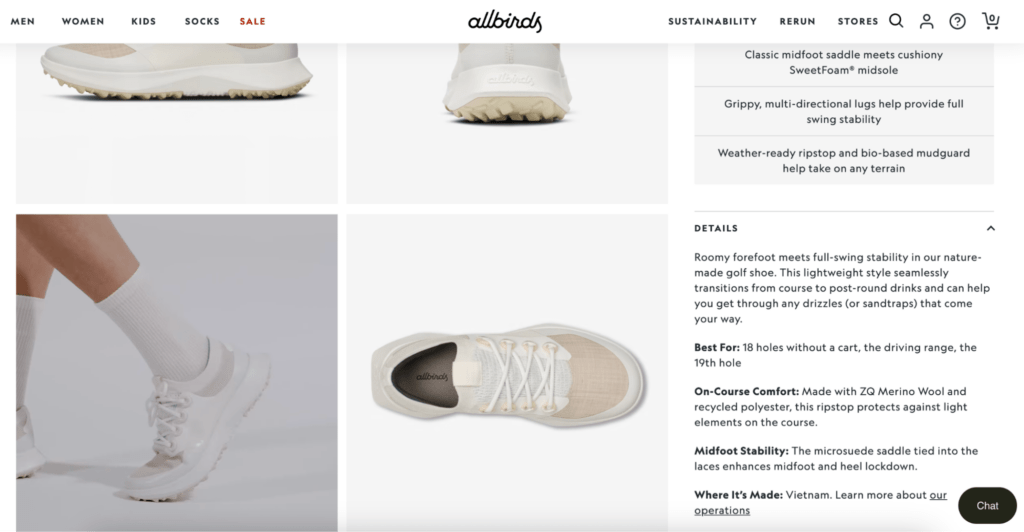
Product recommendations provide cross-selling opportunities re: “Also Consider”:
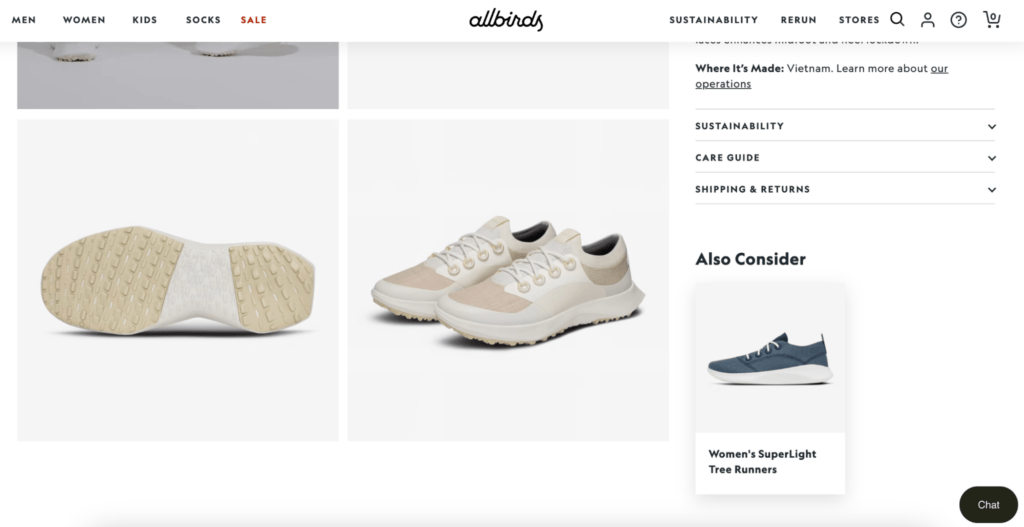
Finally, the glowing reviews at the bottom are strong social proof of the shoes’ popularity among golfers.
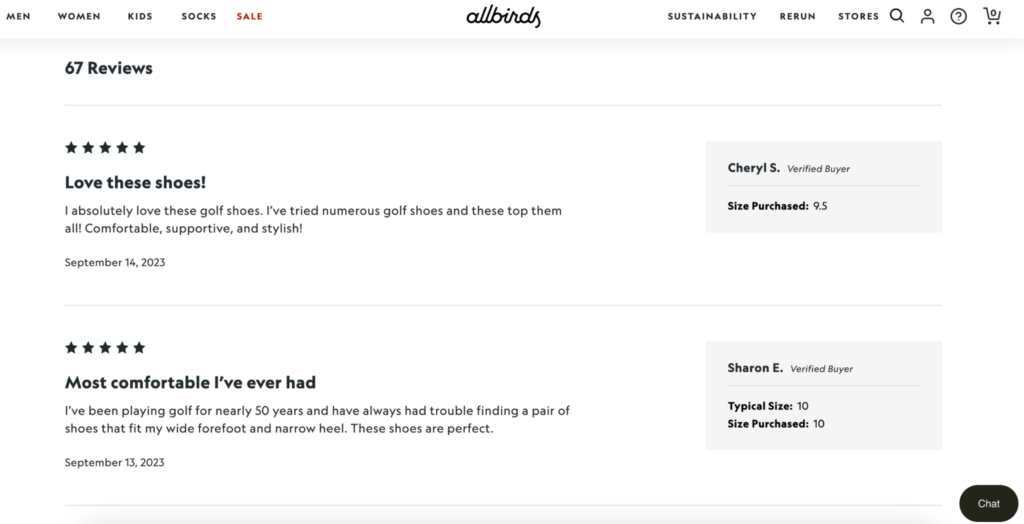
#cta-paragraph-pb#You can build Shogun product page templates for custom page layouts that go beyond a cookie-cutter format. These can incorporate unique elements like accordions, tabs, video, images, etc., and can include value prop sections, FAQs, testimonials, and more. Once you’re happy with a layout, deploy it (and it’s edits) universally across different groupings of your product catalog for consistency.
4. Serve up personalized content
Zig Ziglar was onto something when he said, “People buy on emotions and justify on logic.”
How else can we explain why 62% of surveyed buyers said they felt an emotional connection with brands they were loyal to?
Personalizing the ecommerce customer experience enhances the buyer journey, reduces friction, and is now an expected experience by shoppers encountering it so frequently with leading brands. Around 88% of shopper respondents feel that the experience provided by a brand is as important as its products.
Studies show brands often fall short on customer expectations, and 40% of buyers leave sites due to overwhelming options. While 75% of companies claim to offer “good” or “excellent” personalized experiences, only 48% of buyers agree this is true.
The key is tailoring what shoppers see using data like location, past preferences, and more. But remember, many brands don’t meet personalization expectations, so you need to ensure you’re testing your experience for efficacy.
What you can do
For better personalized ecommerce customer experiences, try the following:
- Conduct market research and craft customer personas to better understand what your potential customers want. Build your customers exact wording into the way you position products throughout your web experience.
- Segment customers based on common characteristics for more precise personalization strategies within your site and email tracks.
- Use customer relationship management (CRM) systems, AI, and machine learning software.
- Seek customer feedback via your site at various touchpoints and use it to enhance personalized offerings.
- Make informed product recommendations based on insights such as preferences and browsing history.
- Enable real-time personalization that instantly reacts to customer actions and preferences, creating a dynamic and engaging experience.
Real-world example of customer experience in action
Let’s explore how Afternoon Light creates a unique, personalized experience.
The home decor website’s vibe is built on comfort, homeliness, and nostalgia. Once you start browsing their products or putting them on your wishlist, they start prompting similar recommendations.

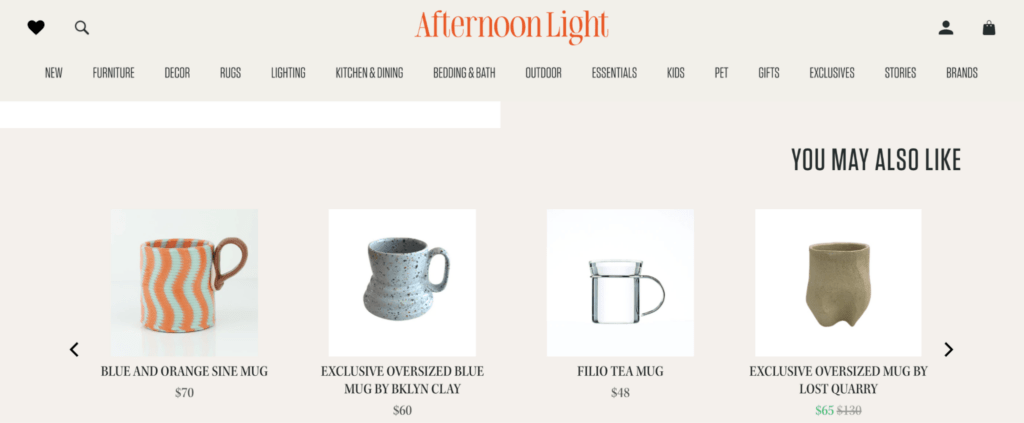
This extends to the empty cart state where shoppers are prompted with ‘products you may also like’:
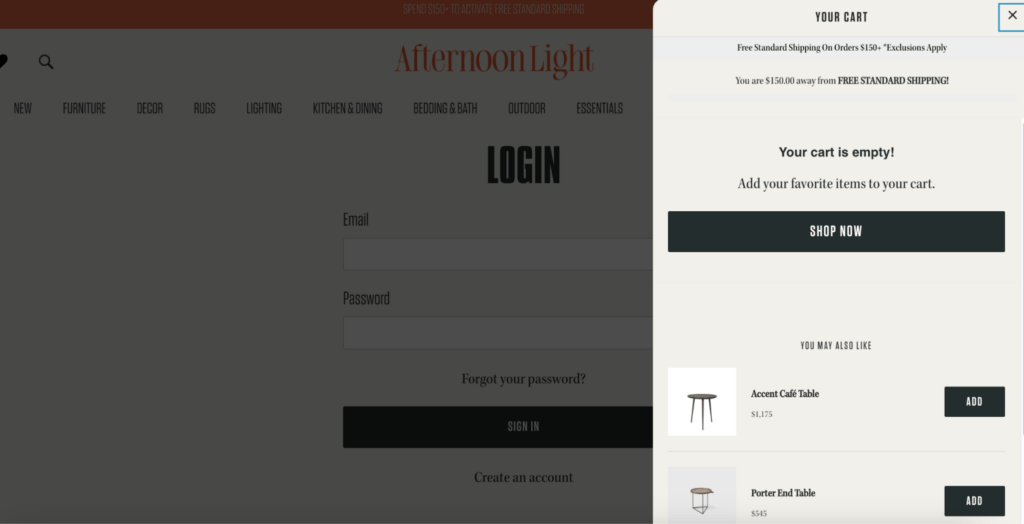
5. Optimize for mobile devices

By the end of 2023, retail mobile commerce sales will account for 43% of ecommerce sales.
Optimizing for mobile users ensures your ecommerce customer experience is seamless across devices, and frankly, it’s another expected factor in today’s omnichannel landscape.
Since 60% of internet traffic comes from mobile devices, mobile-first design is table stakes. If your ecommerce site isn’t easily accessible across devices, you’re losing ground to competitors. Furthermore, with Google’s Mobile-First Indexing, sites optimized for mobile gain a ranking advantage.
What you can do
To make your website mobile-friendly, try the following:
- Ensure responsive design for adaptability to various screens.
- Optimize images and code for quick page loads.
- Simplify menus, use touch-friendly buttons, and make links easily clickable.
- Design content to scroll vertically for mobile users.
- Break up texts into short paragraphs and generously use headers for better readability.
- Streamline forms and checkout for mobile ease.
- Keep your site up-to-date for compatibility with new devices and browsers.
Mobile ecommerce customer expeirence in action: K-Swiss
When K-Swiss shifted to Shopify Plus, they faced challenges with Shopify’s native design tools, especially for responsive design. Having a subpar mobile experience or being slow to launch new campaigns wasn’t going to fly.
So K-Swiss started focusing on creating visually stunning pages compatible with mobile devices:

They used Shogun to ensure the content could be created and managed at scale, layouts were on-brand, and content would responsively adapt to various device breakpoints. A game-changer, the brand reduced development time from three months to two weeks.
With a focus on the mobile aspect of ecommerce customer experience, K-Swiss saw a 10% boost in conversion rates and ~$100,000 in annual savings on development costs.
6. Create captivating content
In 2023, about 69% of content creators (generally) planned to increase their budget for high-quality and frequent content. Why? Regular, quality content is persuasive and, very often, drives business.
While many avenues like Shopify blogging, UGC, email, and social media marketing exist, the core challenge remains—how do you genuinely connect with and captivate your target audience this way?
As we see with content-driven ecommerce brands like BeardBrand and Luxy Hair, you must regularly craft especially engaging content as part of a long game to increase site visits, enhance conversion rates, and strengthen trust for repeat business and positive referrals.
Generic content only leads to a tarnished brand reputation.
What you can do
Consider the following content-specific tactics:
- Dive deep into understanding your target audience to craft especially compelling or engaging content on topics your audience cares about.
- Craft original content that’s helpful to your potential buyers and is built to rank in search with best practices baked in.
- Consider typography, brand voice, color schemes, and shapes when designing layouts for your Shopify blog content. Work to maintain an engaging and visually appealing blog that offers valuable insights.
- Use emails to supplement site content, building relationships and positioning your brand as a trusted source of information.
- Get active on social media platforms to engage with your audience, re-distribute or re-package content from your Shopify or BigCommerce blog, and grow your presence.
- Add prompts to check out products throughout site content where relevant.
- Embed ample user-generated content (UGC), including customer reviews, photos, and videos; this conveys authenticity and trust from existing customers, engages users, and builds customer loyalty.
A real-world example: Tuft + Paw
Tuft + Paw, a brand specializing in cat furniture and accessories, wanted to make their Shopify blog content more appealing and effective in engaging their audience. However, this proved challenging with standard Shopify layouts. They wanted to customize the layout to embed product details where relevant, feature customer testimonials within articles, and make their blog posts even more visually appealing.
- The brand revamped one of their successful blog posts by adding engaging elements like staggered listicle points, a logo bar to showcase social proof, and a prominent visual call-to-action. This makeover encouraged more customers to make purchases.
- Tuft + Paw introduced articles like “The Definitive Guide to Cat Behavior and Body Language” and “The Best Cat Toys of 2023 (so far),” complete with charts, images, and custom visuals, surpassing the capabilities of native Shopify layouts.
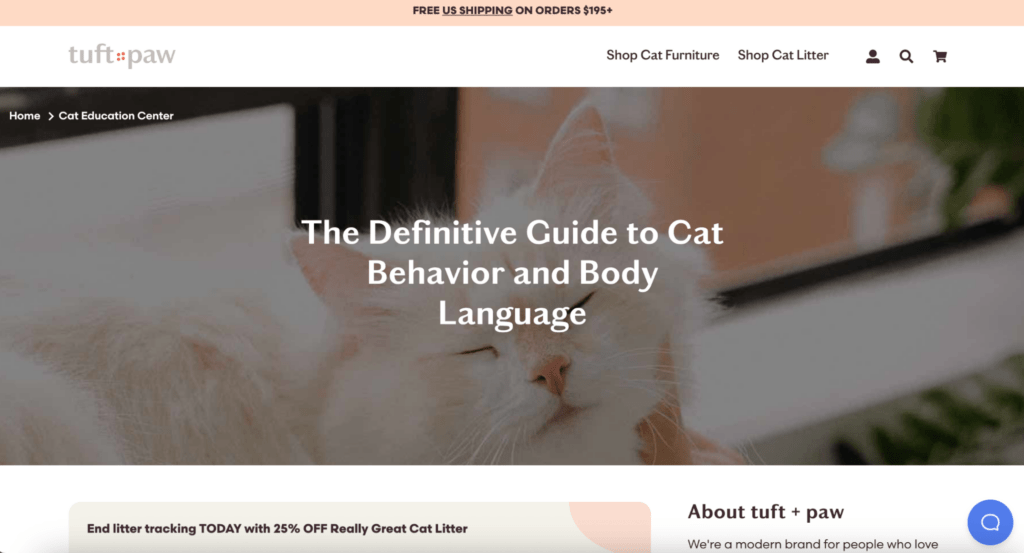
Overall, Tuft + Paw’s optimized post layouts led to a 13% growth in conversion rates, and sowed the seeds for future sales.
A great example of content as an ecommerce customer experience tactic done right!
#cta-visual-pb#<cta-title>Customize your store, fast<cta-title>Optimize your product detail pages, blog layouts, and more with Shogun’s generative AI and optimization features. Get started today
7. Keep your store policies super transparent

Transparency is essential in creating the best ecommerce customer experience possible.
Your store policies, covering returns, refunds, and shipping, play a pivotal role. Customers appreciate knowing what to expect. Transparent policies build trust, offering a safety net for unsure shoppers.
This is why almost 50% of ecommerce sellers offer free return shipping, and 58% of buyers expect a “no questions asked” return option.
What you can do
To enhance transparency in your ecommerce policies as part of customer experience, consider the following:
- Set realistic expectations with detailed and fair shipping policies to prevent potential frustrations.
- Share clear delivery times, shipping costs, and tracking options in timely communications (on site and in email) to help customers make informed choices.
- Ensure both your returns and refund terms and conditions are hassle-free and straightforward.
“One strategy that worked well for us is to offer our customers custom expedited shipping. Rush orders still have a specific date they’re expedited to be delivered within a state or region. However, we take it a step further and allow customers to request deliveries even sooner than the regular rush order schedule. Customers love that we handle their case on an individual level. It helps personalize their experience further.”
~Michael Nemeroff, CEO and Co-Founder, Rush Order Tees
Real-world example: United by Blue
In the screenshot above, notice the kind and understanding tone of voice United By Blue uses to explain its transparent returns policy.
Instead of a bland, soulless header like the usual “Returns Policy,” the one above says, “Returns Happen,” quickly easing worry or guilt a buyer might feel about returning an item.
The copy begins: “Don’t worry…” instantly making the reader feel understood and increasing brand trust a little more.
Notice how these tiny tweaks on wordplay can create a world of difference in how the buyer perceives your business.
Tools and resources
Here are some tools and resources that can help build transparent store policies:
- Legal templates: use LegalTemplates or TermsFeed for quick, customizable policy drafts.
- FAQ builders: try WP FAQ for a thorough, easy-to-navigate FAQ section.
- Live chat: implement Intercom or Zendesk for real-time policy clarification.
- Policy pop-ups: try OptinMonster for exit pop-ups on key policies.
- Shipping software: try ShipStation or AfterShip for transparent shipping and returns.
8. Design a smooth checkout and payment process
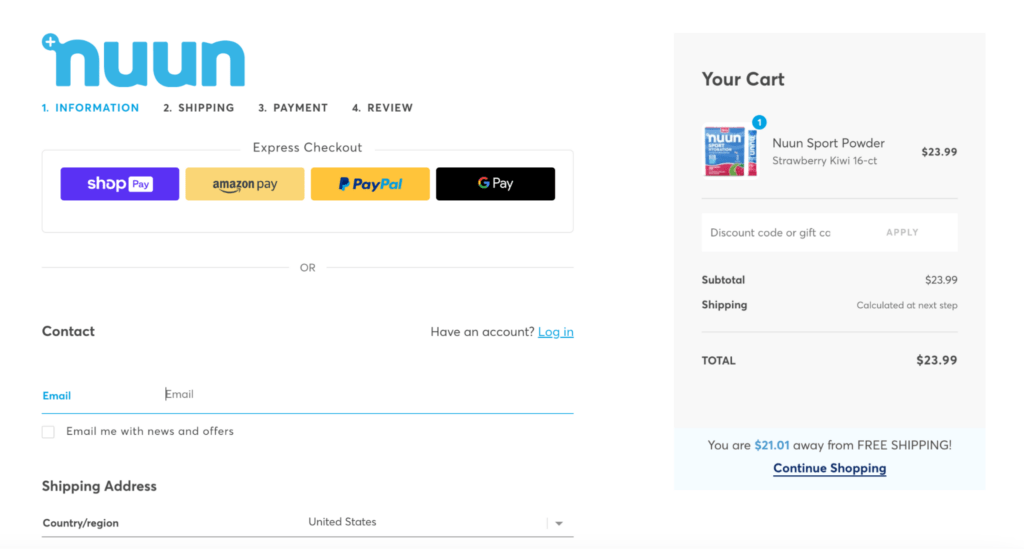
Research suggests that 70% of online buyers abandon their carts at checkout. A poorly designed checkout can be a recipe for losing customers at the conversion stage.
Poor checkout processes result in cart abandonment, largely because of a loss of trust and security concerns along the way. Your customers want to avoid dealing with the friction and need to feel safe moving forward with payment.
What you can do
Here’s how you can make your ecommerce checkout awesome:
- Provide customers with a secure checkout system that protects their payment information.
- Simplify your checkout process as it leads to more completed purchases, boosting your revenue.
- Ensure smooth and hassle-free checkouts for repeat business.
- Boost cross-selling and upselling options within the strategic design of checkout pages.
- Customize with features like live chat as this can help reduce pre-purchase anxiety and help answer last-minute detailed questions.
Real-world example: Nuun
Here’s a deep dive into Nuun’s checkout process to understand what makes it so user-friendly:
1. Clear steps and multiple payment options: as seen in the first image, Nuun begins their checkout with clear progression stages — Information, Shipping, Payment, and Review. Alongside, they offer versatile choices like Shop Pay, Amazon Pay, and PayPal for ease.
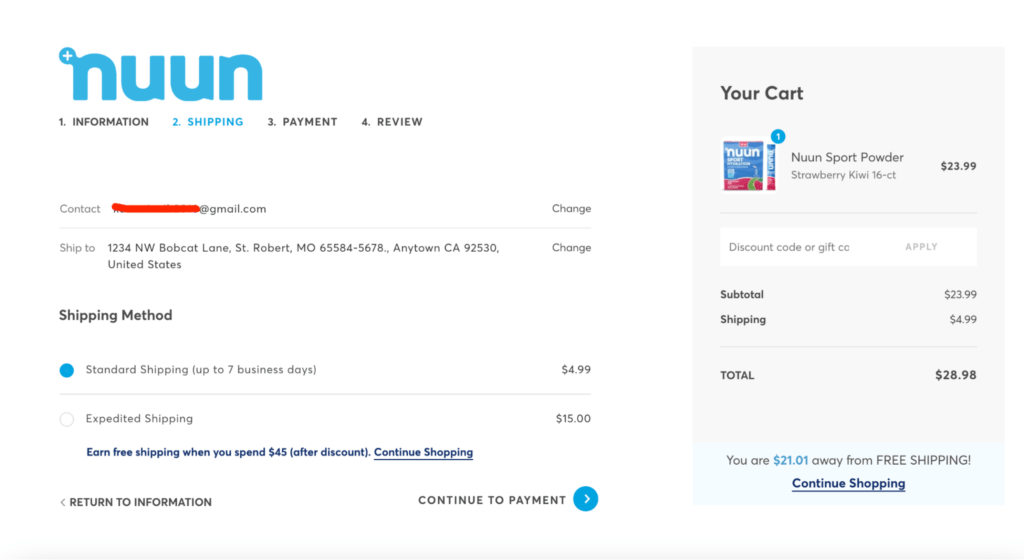
2. Contact and shipping details are included/accessible: the same image showcases clutter-free forms for contact and shipping, emphasizing transparency with shipping costs and times.
3. Express billing option: The next image highlights Nuun’s billing process. Customers can easily select their billing address, choose to save their details for a quicker checkout next time, and securely proceed with their purchase using options like PayPal. Adding a mobile phone number further ensures the security of their purchase.
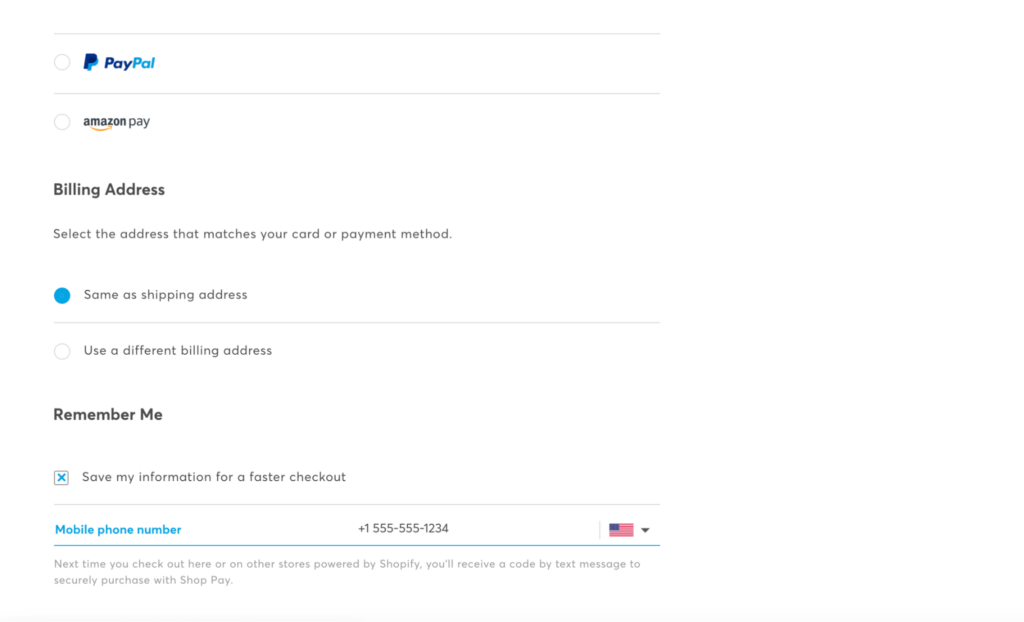
4. Incorporates up-selling: Nuun smartly lets you know how much more you need to add to your cart for free shipping, potentially increasing the sale value.
Take a page from Nuun’s approach to refine and elevate your own process. Remember to optimize checkout with clear visual cues, straightforward steps, and simple forms.
9. Seek customer feedback
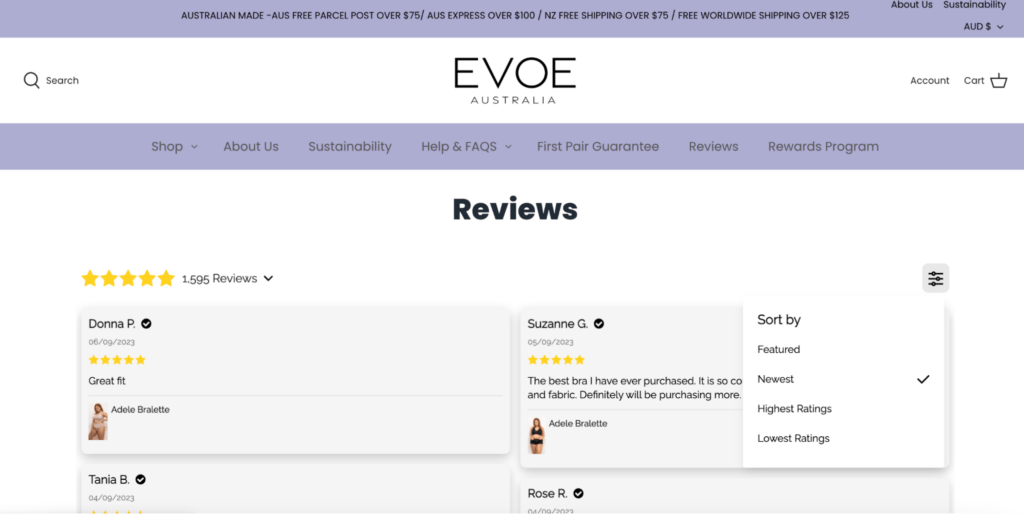
66% of customers say positive reviews influence their purchase decisions. When happy customers share their experiences, it builds trust and encourages others to buy from you.
Further, brands can only improve their products or services effectively with great customer feedback. And if you don’t address customer complaints, your users won’t be happy and likely switch to other brands.
What you can do
You’re serving two different groups through customer feedback:
1. New buyers who’d trust you and be convinced to buy from you on seeing the user reviews.
2. Your loyal customers who’d be willing to make repeat purchases, seeing that you listen to their feedback and adapt to better suit their needs.
However, people often need to be asked to give a review, so creating campaigns around asking for reviews is important.
By addressing issues raised in customer complaints, you show that you care about your customers.
This helps turn unhappy shoppers into loyal fans. By making changes based on your buyers’ inputs, you improve your product and build a devoted customer base who return for repeat purchases.
Real-world example: Evoe Austrailia
Look at how seamlessly sustainable clothing brand Evoe Australia incorporates reviews into their website.
You even have the option to sort the reviews based on parameters like “featured” and “newest.”
They also have a section called “pain and surgery reviews,” where buyers rated their bras based on how comfortable they were before, during, and after breast and other surgeries.
This is how you show what your brand stands for and build a loyal following.

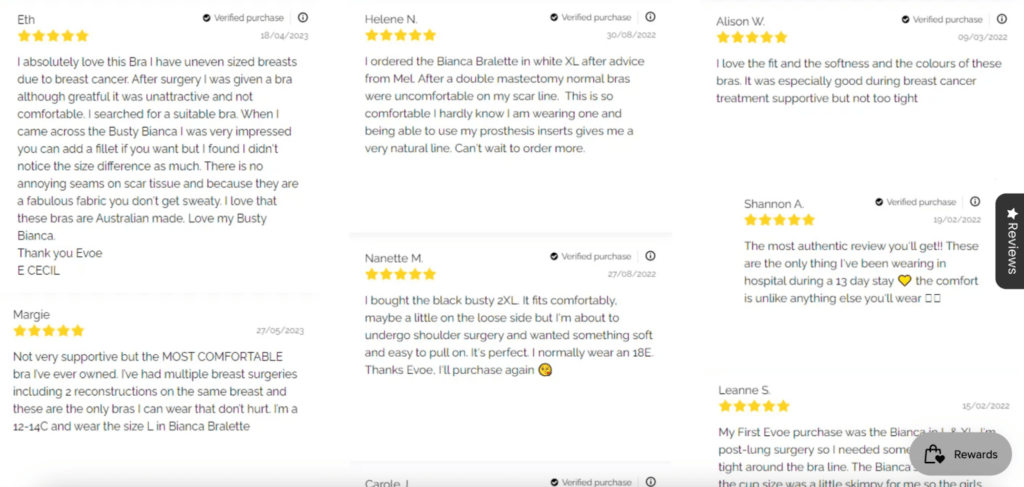
#cta-paragraph-pb#With Shogun, you can effortlessly drag-and-drop reviews onto your ecommerce website with top user review tools like Yotpo, Loox, and Judge.me.
10. Transform customer experiences with augmented reality (AR)
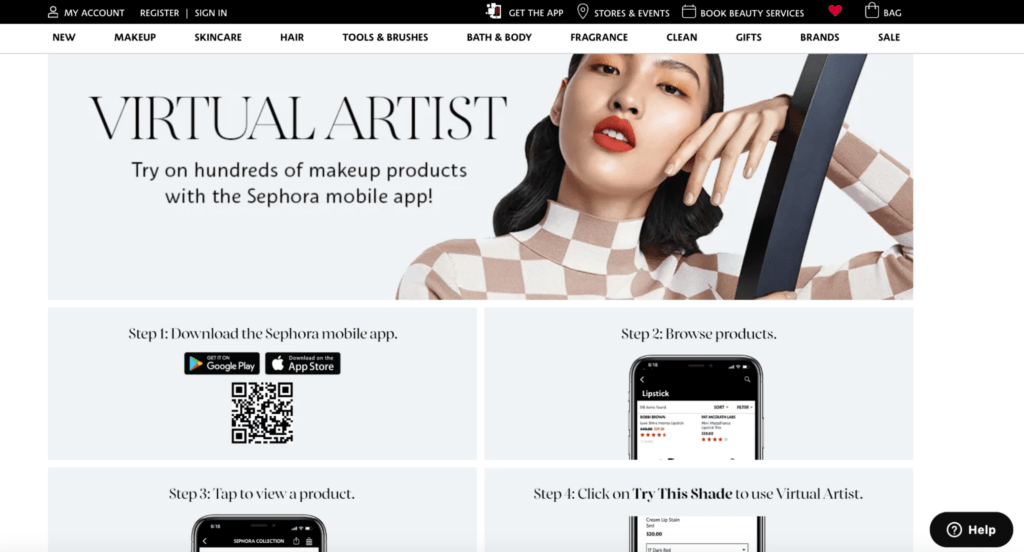
Augmented reality (AR) lets your buyers visualize products in their real-world environment before buying. And it’s popular for a reason: augmented reality product experiences are said to provide users 200% more engaging experiences than their non-AR counterparts.
Despite the potential, however, only 1% of ecommerce sellers currently leverage AR, making it a prime opportunity to differentiate yourself and gain a competitive advantage.
While 61% of buyers say they prefer retailers with AR, around 52% of retailers say they are still getting ready to integrate AR into their ecommerce experience.
With this tech innovation (that also personalizes the ecommerce customer experience!), shoppers can gain a realistic experience and confidence about purchase decisions.
What you can do
Integrating AR into your ecommerce strategy can revolutionize the shopping experience. Enable customers to visualize products in their own space, and offer virtual try-ons for fashion and beauty items, and create interactive demos.
Developing user-friendly AR apps and using AR in marketing campaigns can engage and delight customers while setting your brand apart.
Below are some tools and resources to help you incorporate AR into your ecommerce customer experience:
- ARKit and ARCore: for iOS and Android app development, including AR features.
- Vuforia: specializes in AR experiences for multiple platforms.
- Snapchat’s Lens Studio: helps create AR experiences to engage potential customers on social media.
- Sketchfab: can easily embed 3D models into your ecommerce site.
AR in ecommerce isn’t just a trend—it’s the future. By being an early adopter of augmented reality, you can help customers reduce returns. It’s an opportunity to differentiate, and elevate your customers’ shopping experience.
Skyrocket conversions with top ecommerce customer experience tactics
Success in ecommerce hinges on the quality of the customer experience. From seamless interfaces to the advantages of augmented reality, every touchpoint is crucial.
But remember, it’s not just about using these recommended tactics—it’s about tailoring them to your customers. Prioritize their needs, and you’ll boost sales while building lasting loyalty.
#cta-visual-pb#<cta-title>Customize your store, fast<cta-title>Optimize your product detail pages, blog layouts, and more with Shogun’s generative AI and optimization features. Get started today

Leigha Henderson
Leigha is a content marketing specialist and content creator. She found her path through a love of research, strategy, data, and the written word. (And skiing. She also loves skiing.)

